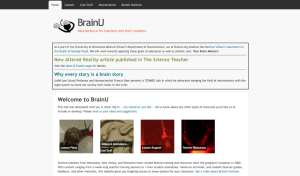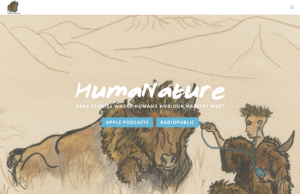Research and Education
Back to Top
|
 |
|
Musical Geography: Mapping Place and Movement Throughout Music History
|
Arts |
|
"How can mapping change the way we think about music history?" This "deceptively simple" question is posed on the homepage of Musical Geography, a fascinating collection of projects that explore the intersections of music, geography, and time. Musical Geography was launched in 2015 by Louis Epstein, a professor of music and musicology at St. Olaf College in Northfield, Minnesota. Epstein initially teamed up with four St. Olaf students to create a map of the vibrant music scene of 1924 Paris. Since then, Epstein has worked with two additional student research teams to create additional projects about the geography of music history. Visitors can explore these projects in the Maps section of this website. These projects include "Mapping the Collection of Russian Folk Songs in the Long 19th Century," "Mapping Black Gospel Music," and "The Second Viennese School in Russia." Each of these projects features at least one map (including maps created using Google Maps, ArcGIS, and JS StoryMap) and a short essay. Musical Geography offers a useful resource for instructors and researchers of history and musicology. In addition, this resource may offer inspiration for researchers interested in pursuing their own mapping projects. Visitors who enjoy these maps will want to be sure to check out the Digital Humanities Models section of the Resource Guide, which features a number of other projects and resources that may be of interest. [MMB] |
|





|
|
 |
|
The Browning Letters
|
Language Arts |
|
In addition to their poetry, Robert and Elizabeth Barrett Browning are well-known for their numerous letters and correspondence. Scholars and fans will appreciate The Browning Letters, a project that started as a partnership between Baylor University's Armstrong Browning Library and Wellesley College. Because the Brownings' letters and other memorabilia are physically housed in separate collections around the world, this digital collaboration aims "to make the compelling love story of the two poets available to scholars and enthusiasts around the globe." One of the stars of this project is its collection of the Brownings' famous love letters written during their courtship from 1845-1846. This resource also includes correspondence written to and from their family members and other poets, such as Alfred Tennyson. The collection may be searched by multiple fields (including keyword, author, date, first line of text, and location) via the advanced search link at the top. As of this writing, The Browning Letters includes digitized contributions from Balliol College at Oxford University, the Harry Ransom Center at the University of Texas-Austin, and Ohio State University. This an active collection and those interested can subscribe via RSS feed to be notified of new additions. [JDC] |
|





|
|
 |
|
BrainU
|
Science |
|
Science educators may be interested in BrainU, an educational neuroscience project for teachers directed by Janet Dubinsky, professor of neuroscience at the University of Minnesota. BrainU offers material for K-12 teachers to begin teaching about brain science and to aid their students' learning processes. Under the lessons tab, readers will find more than fifty well-developed lesson plans that are organized by grade level, lesson length, and learning situation (e.g. classroom, laboratory, or experiential station). At the top of the lesson page are links to BrainU's "Neuroscience Concepts and Activities" pages, which are grouped by grade level and intended as curriculum planning aids. Under the cool stuff tab, viewers will find links to curated collections of animations, images, and other visual materials available for classroom use. The Neuroscience tab leads readers to a collection of supplementary teaching materials, such as activities for review, a suggested reading list for teachers, and a glossary of neuroscience terms. BrainU offers a unique way for science teachers to enhance their curriculum and their students' learning. [JDC] |
|





|
|
 |
|
University of Victoria: Transgender Archives
|
Social studies |
|
Established in 2007, the University of Victoria's Transgender Archives is home to a number of "documents, rare publications, and memorabilia of persons and organizations associated with activism by and for trans, non-binary, and Two-Spirit people." On the archive's homepage, visitors will find a number of resources that may be of interest, including digitized archival materials, videos, and the Archives' report "The Transgender Archives: Foundations for the Future." This report, which is authored by Transgender Archives founder Aaron Devor, offers visitors a good introduction to the scope and depth of the Archives' collection. In addition, this report provides an overview of transgender history in North America and Europe, along with photographs of numerous archival materials. Visitors will find a link to the Archives' online collections in the Our Collections tab. The online collection, which contains contributions from other archives, includes a number of periodicals, drag show programs, and back issues of the Renaissance News (later called Transgender Community News, a publication that ran from 1987 through the early 2000s. [MMB] |
|





|
|
 |
|
The Good Person: Excerpts from the Yoruba
|
Language Arts |
|
The Good Person: Excerpts from the Yoruba is a compilation of hundreds of Yoruba proverbs. This resource was created by the late Oyekan Owomoyela, who taught African Literature at the University of Nebraska-Lincoln and was a leading scholar on Yoruba literary forms. Owomoyela writes in his introduction to this project, "[b]elieving that it carries great psychic properties, the Yoruba approach speech with deliberate care, taking great pains to avoid careless, casual, or thoughtless statements whose damage might outlast lifetimes." Proverbs, Owomoyela goes on to note, play a central role in Yoruba speech. In this collection, proverbs are organized into six thematic categories. These categories include: "On humility, self-control, self-knowledge, self-respect, and self-restraint;" "On perspicaciousness (good judgment, perceptiveness), reasonableness, sagacity, savoir-faire, wisdom, and worldly wisdom;" and "On consideration, kindness, and thoughtfulness." Within each of these six categories, proverbs are organized alphabetically. Each Yoruba proverb is accompanied by both an English translation and a note about the proverb's meaning. [MMB] |
|





|
|
 |
|
 |
|
The Lake Superior Legacy Collection
|
Science |
|
In 1882, field geologists from the Lake Superior Division of the US Geological Survey (USGS) began meticulously mapping, collecting samples, and taking inventory of the geology and mineral resources of the Lake Superior region. This survey was completed in 1922, and today the data collected during those four decades of research can be found in the Lake Superior Legacy Collection. Here, visitors will find scanned images of the division geologists' field notebooks and hand-drawn maps, as well as photographs of rock samples (both hand samples and thin sections with accompanying metadata) collected during their survey. This digital collection also features an interactive map where viewers can browse the data based on where it was originally collected, with locations spanning parts of Minnesota, Wisconsin, Michigan, and Ontario. In addition to the collection's importance to geologists, it may also be of particular interest to historians and geographers. The Lake Superior Legacy Collection was created by the Wisconsin Geological and Natural History Survey in partnership with the University of Wisconsin Digital Collections. It was funded by the USGS National Geological and Geophysical Data Preservation Program. [JDC] |
|





|
|
 |
|
Peregrinations: Journal of Medieval Art & Architecture
|
Arts |
|
Peregrinations: Journal of Medieval Art & Architecture is an open-access journal published by the International Society for the Study of Pilgrimage Art. Here readers will find scholarly articles focused on "medieval visual culture" as well as book reviews, photo essays, and shorter pieces with a more personal approach. Some issues center around a theme. For example, the most recent theme is the publication's third biennial "Mappings" issue, while medieval graffiti is the theme of the Spring 2017 issue. Art history educators and interested readers may also want to visit this journal's image gallery via the "Photobank" link in the left sidebar, where, as of this writing, they will find over 2,400 images contributed by medievalists as educational resources. Edited by Sarah Blick, professor of Art History at Kenyon College, Peregrinations is published periodically and is part of Kenyon College's digital repository. Each article can be downloaded individually as a PDF, and readers can subscribe via email or RSS to be notified of new publications. [JDC] |
|





|
|

























